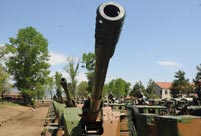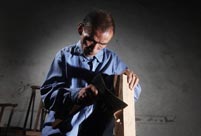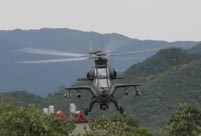

BEIJING, Jan. 8 -- The daily number of trips made on the Beijing subway fell by about 800,000 on average, or 8 percent, after the government raised fares in late December, according to a report.
The report, issued by the Beijing Transportation Research Center on Tuesday, showed that Line 10 and the Batong Line have seen their daily passenger flow decline by 18 percent and 15 percent respectively, while 11 other lines saw decreases ranging from 2.6 percent to 13.2 percent.
Many commuters have abandoned the subway due to the fare hike, including 11.5 percent of those traveling less than 4 km and 15.1 percent of those traveling more than 52 km, according to the report.
The data showed that daily subway passenger flow declined by 11.8 percent during non-peak hours, compared with 3.9 percent during morning rush hours and 8.7 percent during evening rush hours.
Although the Beijing subway's notorious crowding has eased, nine subway lines still carry more than their designed passenger capacity during rush hours. On the Changping Line, the most crowded, seven to eight passengers crowded into one square meter of the train.
The new subway fares are double the previous price on average. Previously, there was a flat two yuan (about 0.32 U.S. dollar) rate for single tickets and unlimited transfers. Under the current fare scheme, the minimum price for a subway ride is three yuan, which is valid for travel within six kilometers. The longer the distance, the higher the price.
But subway commuters using smart cards may enjoy discounts if they spend more than 100 yuan, but no more than 400 yuan, each month. As a result, the proportion of passengers using the card has increased to 85 percent from 80 percent, according to statistics from the Beijing Municipal Commission of Transport.
Despite the reduced passenger flow, the report noted that major indicators, such as average travel distance, transfers and commute time figures, have seen no major changes.
In addition, the passenger flow "is likely to rebound," given that residents may gradually accept the fare hike, according to the report.
 PLA soldiers operating vehicle-mounted guns in drill
PLA soldiers operating vehicle-mounted guns in drill Beauties dancing on the rings
Beauties dancing on the rings Blind carpenter in E China's Jiangxi
Blind carpenter in E China's Jiangxi Top 10 highest-paid sports teams in the world
Top 10 highest-paid sports teams in the world In photos: China's WZ-10 armed helicopters
In photos: China's WZ-10 armed helicopters UFO spotted in several places in China
UFO spotted in several places in China Certificates of land title of Qing Dynasty and Republic of China
Certificates of land title of Qing Dynasty and Republic of China  Cute young Taoist priest in Beijing
Cute young Taoist priest in Beijing New film brings Doraemon's life story to China in 3D
New film brings Doraemon's life story to China in 3D China-S.Korea FTA sets positive precedent
China-S.Korea FTA sets positive precedent Ferry carrying 458 people sinks in Yangtze River
Ferry carrying 458 people sinks in Yangtze River Mecca of Marxism
Mecca of Marxism Bring them home
Bring them homeDay|Week